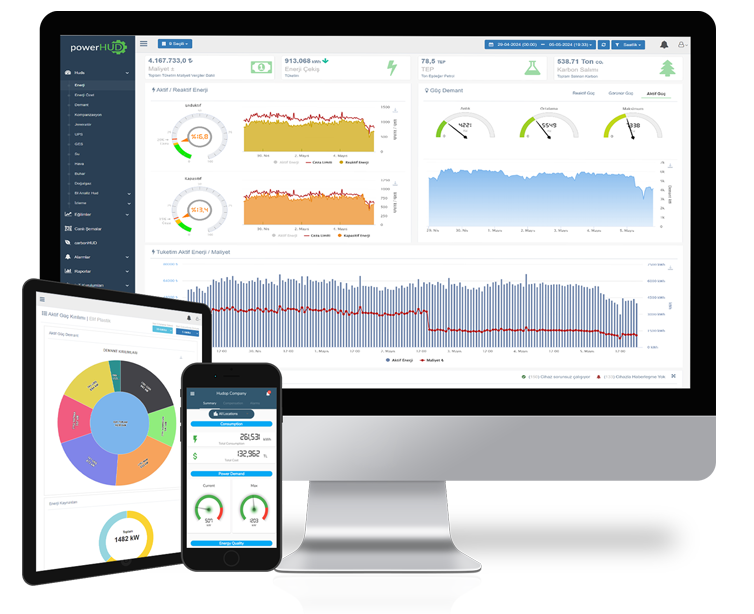Energy Monitoring: What Is It and Why Is It Important?
 Monitoring energy consumption or tracking the energy you consume is important, and we will explain the returns it will bring you. Energy tracking plays a key role in energy efficiency. Through monitoring, you will have access to consumption data from all breakdowns, consumption trends, and developments. Additionally, you will see opportunities to reduce consumption without compromising performance and thus reduce costs. So what does energy management really entail? We’ll examine how statements like “we monitor 24/7, collect trends, and alert you when alarms occur” actually contribute to management/efficiency in real scenarios.
Monitoring energy consumption or tracking the energy you consume is important, and we will explain the returns it will bring you. Energy tracking plays a key role in energy efficiency. Through monitoring, you will have access to consumption data from all breakdowns, consumption trends, and developments. Additionally, you will see opportunities to reduce consumption without compromising performance and thus reduce costs. So what does energy management really entail? We’ll examine how statements like “we monitor 24/7, collect trends, and alert you when alarms occur” actually contribute to management/efficiency in real scenarios.
“Savings” is the most commonly used term and is usually presented as follows: Monitor energy consumption and save. Monitor remote compensation to avoid penalties. Save up to 30%. Sounds easy, doesn’t it? But no one explains how to do it. It creates the perception that everything will change on its own after implementation. On the efficiency side, things aren’t as easy as these statements suggest. Energy management is a job in itself. While monitoring all energy sources, environmental impacts must also be accounted for. Determining the thermal coefficients of each energy source, establishing baselines for them, calculating deviations over time, identifying disruptive effects that deviate from the target, and providing detailed information on what actions need to be taken on the client side are all necessary.
In businesses attempting to implement ISO 50001 principles, providing sufficient data to energy engineers working on these projects continuously and ensuring they stay within this framework is crucial for sustainable knowledge transfer. Correlating the collected data is also crucial while performing all these operations. Data generated by different energy sources such as air, water, steam, natural gas, etc., are values used in efficiency calculations and must speak a common language. Opting for energy management systems that provide a holistic approach is important in this regard.
Where Do We Begin?
Most businesses already have energy analyzers or meters in their existing infrastructure, and turning these devices into communicative devices providing information is a simple revision. With these devices, Energy Power demands, Voltages, Currents, Reactive power values, and energy consumption information can be easily collected. Comparisons made daily, weekly, monthly, sudden consumption increases, trend monitoring, energy quality values, and many other valuable data processed in the light of the collected data will reveal opportunities to lead you to efficiency. If you are going to make new investments or changes in your business, you will be able to make future cost and consumption predictions based on past consumption data using regression analysis. Do not consider your energy costs as fixed expenses; you will see that this is not the case when you manage your energy consumption. One of the confusing topics is that even meter reading software available on the market is marketed as energy management software.
There are different names for the processes we described above for different products on the market.
Energy Monitoring Systems = Only reports the values it reads by monitoring. They are simple software. Some are available for free.
Energy Tracking Systems = Monitors and sends alerts to the user according to defined conditions. They have reporting screens. Users can receive reports for a certain interval if desired.
Energy Management Systems = Monitors energy, tracks while monitoring, processes the collected data in real-time, has an alert engine and operates rules, analyzes consumption trends, makes predictive estimates with machine learning, makes daily, monthly, yearly comparisons, and sends automatic reports. In other words, it completely manages everything for you.

